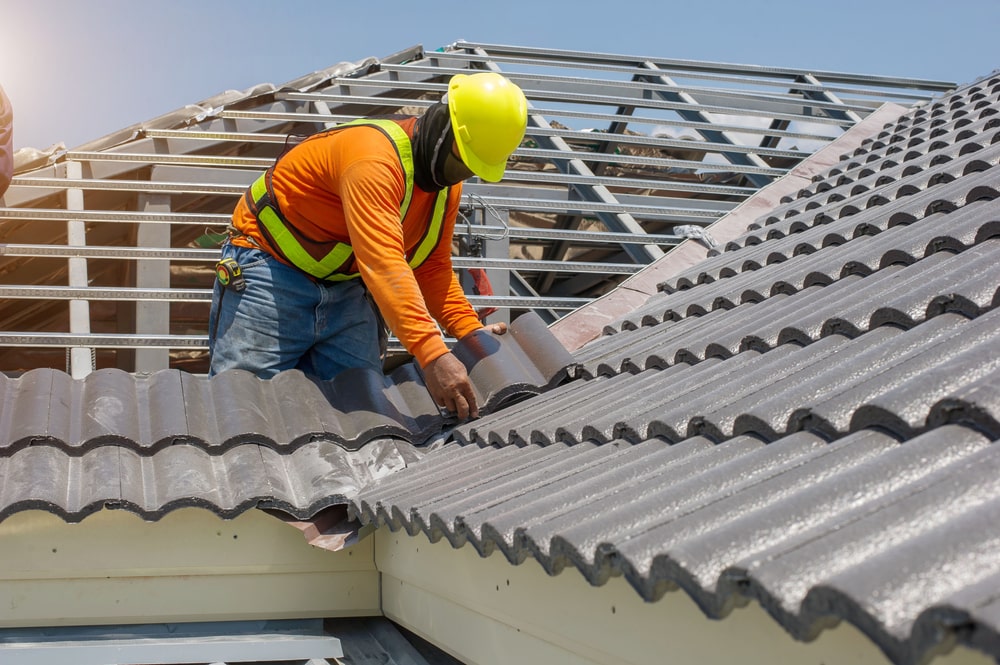Neighborhood Insights on Roofing Companies Gainesville Florida Homeowners Prefer
Neighborhood Insights on Roofing Companies Gainesville Florida Homeowners Prefer
Blog Article
Ideal Practices for Ensuring Appropriate Roof Covering Air Flow
A well balanced consumption and exhaust vent ratio, frequently 1:300, plays a crucial function, with intake vents ideally placed at the lower side of the roof for awesome air entrance and exhaust vents at the optimal for cozy air departure. Keeping insulation away from vents is important to stop air flow constraint.
Understand Air Flow Fundamentals
Properly comprehending ventilation fundamentals is crucial for making certain the long life and effectiveness of roof. Efficient ventilation alleviates moisture buildup and temperature level extremes in the attic, both of which can bring about substantial architectural damage with time. A well-ventilated roof assists in avoiding typical issues such as mold and mildew development, wood rot, and ice dams, which can jeopardize the honesty of the roofing materials and the underlying frameworks.
The primary goal of air flow is to facilitate the movement of air, permitting a constant exchange between the exterior and indoor atmospheres. This balance is attained with a mix of consumption and exhaust vents that function together to keep optimal air flow. Consumption vents, typically situated along the soffits or eaves, enable fresh air to go into the attic space, while exhaust vents, frequently positioned at or near the roof covering ridge, make it possible for warm, damp air to get away.
Key factors influencing the performance of roof covering ventilation consist of appropriate positioning, adequate sizing, and making sure that both consumption and exhaust vents are unblocked. Normal assessment and maintenance are important to identify potential clogs, damage, or inefficiencies in the ventilation system, therefore safeguarding the roofing's efficiency and toughness.
Types of Roof Covering Vents
Roofing vents play an essential function in maintaining efficient attic air flow and, by expansion, the overall wellness of the roofing system. Numerous kinds of roof covering vents are offered, each with distinct advantages tailored to specific roof covering requirements. Ridge vents, for instance, are installed along the roof's top, permitting warm, humid air to run away from the attic. They supply constant air flow and mix seamlessly with the roofline, making them both efficient and visually pleasing.

Soffit vents are set up under the eaves and job in tandem with roof vents to ensure a balanced consumption and exhaust system. By allowing cooler air to go into from below, soffit vents promote the expulsion of warm air via top vents. Gable vents, located on the exterior wall surfaces of the attic room, deal an additional reliable solution, especially in homes with gable roofings.
Examine Your Current Ventilation

Next, think about the age and problem of your roofing products and air flow elements. Older systems may not adhere to current building regulations or might have weakened gradually, decreasing why not try these out their effectiveness. Conduct a complete evaluation to determine any type of indications of deterioration, such as corrosion, damage, or gaps that could compromise the system's performance.
Additionally, measure the attic temperature and humidity degrees. High temperature levels and moisture can indicate insufficient ventilation.
Installation Best Practices
Reliable installation of roof covering ventilation systems is extremely important for ensuring optimum performance and long life. Proper setup starts with understanding the details ventilation requirements of the building and the roofing system it covers. This involves calculating the right ratio of intake to wear down vents, commonly sticking to the 1:300 guideline, which stipulates one square foot of ventilation for each 300 square feet of attic floor room.

The positioning of vents is equally essential. Consumption vents ought to be set up at the roofing's lower side, typically in the soffits, to enable awesome air to get in. Exhaust vents, on the other hand, need to be set up near or at the roof's height to help with the exit of cozy, damp air. This produces an all-natural airflow that aids keep temperature level and dampness balance within the attic room room.
Seal all vent connections diligently to click here to find out more avoid air leakages and prospective water infiltration. Usage premium materials and comply with supplier guidelines to guarantee longevity and performance. Furthermore, incorporating ridge vents with baffles can dramatically improve airflow efficiency by protecting against wind-driven rain and snow from going into the attic room.
Inevitably, precise installment of roof covering ventilation systems alleviates possible concerns such as mold development, ice dams, and structural damage, ensuring the roof covering's honesty and the building's total wellness.
Normal Maintenance Tips
Consistency in upkeep practices is basic to making certain the lasting efficiency of roof ventilation systems. Regular evaluations are critical, ideally performed biannually-- in the spring and fall. Throughout these examinations, ensure that vents are devoid of particles, nests, and other obstructions that could hinder air movement. Inspect for any type of indicators of wetness accumulation or mold, as these can indicate incorrect air flow or leaks (roofing companies in gainesville florida).
Utilize a soft brush or a vacuum to remove dirt and particles from consumption and exhaust vents. Be mindful not to harm the air vent displays or louvers throughout the procedure.
Proper insulation is similarly vital. Make certain that attic insulation does not obstruct the vents, as this can badly limit air flow. If any kind of insulation has moved or cleared up, rearrange or change it to preserve an efficient barrier.
Last but not least, Look At This change any damaged or missing parts quickly. Busted vents, cracked tiles, or tatty blinking can all contribute to poor ventilation and needs to be addressed right away. Normal upkeep guarantees that the roofing air flow system works efficiently, thus expanding the lifespan of the roof itself.
Conclusion
Guaranteeing appropriate roofing air flow is paramount for maintaining the efficiency and resilience of a roofing system. Adherence to the 1:300 intake and exhaust vent ratio, coupled with the critical positioning of vents, is crucial.
A well balanced consumption and exhaust air vent ratio, commonly 1:300, plays a pivotal function, with consumption vents preferably positioned at the reduced side of the roofing system for trendy air access and exhaust vents at the optimal for cozy air exit. Intake vents, normally located along the soffits or eaves, enable fresh air to get in the attic room room, while exhaust vents, usually situated at or near the roofing ridge, enable warm, moist air to leave.
Soffit vents are set up under the eaves and work in tandem with roof vents to ensure a well balanced consumption and exhaust system. By enabling cooler air to enter from below, soffit vents help with the expulsion of warm air with top vents. Adherence to the 1:300 consumption and exhaust vent proportion, paired with the critical placement of vents, is important.
Report this page